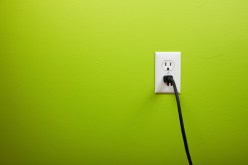Make an Informed Purchase with our Comprehensive Flat Screen TV Dimensions Chart
Are you in the market for a new flat screen TV but unsure about the right size for your space? Don’t worry, we’ve got you covered. In this article, we will provide you with a comprehensive flat screen TV dimensions chart to help you make an informed purchase decision. From understanding screen size to considering aspect ratios and bezel width, we’ll cover all the essential factors to consider when choosing the perfect flat screen TV dimensions for your needs.
Screen Size: Finding the Perfect Fit
The first and most crucial factor to consider when selecting a flat screen TV is the screen size. This measurement is typically expressed in inches and refers to the diagonal distance from one corner of the display to the opposite corner. Determining the ideal screen size depends on two main factors: viewing distance and personal preference.
To calculate the optimal viewing distance, a general rule of thumb is that it should be approximately 1.5 to 2.5 times the diagonal length of your TV screen. For example, if you have a 50-inch TV, your seating area should be around 75 to 125 inches away from the screen.
However, personal preference plays a significant role as well. Some individuals prefer a more immersive experience with larger screens that fill their field of vision, while others may prioritize aesthetics or have limited space available.
Aspect Ratio: Understanding Image Proportions
The aspect ratio refers to the proportional relationship between a television’s width and height. It determines how images are displayed on your flat screen TV. The most common aspect ratios for modern TVs are 16:9 (widescreen) and 4:3 (standard).
A 16:9 aspect ratio is ideal for watching movies and most modern content since it matches today’s widescreen formats. On the other hand, a 4:3 aspect ratio may be suitable if you plan to watch older movies or play retro video games.
When considering the aspect ratio, it’s essential to ensure that the content you intend to watch is compatible. Most TVs can handle different aspect ratios, but they may require letterboxing (black bars on the top and bottom) or pillarboxing (black bars on the sides) to maintain the original image proportions.
Bezel Width: Balancing Functionality and Design
The bezel refers to the frame surrounding the screen of a flat screen TV. While it may seem like a minor consideration, bezel width can significantly impact your viewing experience and overall aesthetics.
A narrower bezel allows for a more immersive viewing experience as it minimizes distractions and provides a larger screen-to-body ratio. It gives the illusion of a bigger display, making your TV look sleeker and more modern.
On the other hand, a wider bezel offers practical benefits. It provides space for built-in speakers, controls, and connectivity ports without compromising on-screen real estate. Additionally, a wider bezel can add an elegant touch to your TV’s design, especially if it matches your room’s decor.
Ultimately, choosing between a narrow or wide bezel depends on your personal preferences and priorities. Consider whether you prioritize functionality or design when making your purchase decision.
Additional Considerations: Weight, Mounting Options, and Connectivity
In addition to screen size, aspect ratio, and bezel width, there are several other factors worth considering before finalizing your flat screen TV purchase.
Firstly, consider the weight of the TV. Ensure that your chosen location can support its weight safely. If you plan on mounting it on a wall or ceiling, make sure you have appropriate mounting brackets that are compatible with both your TV and wall type.
Secondly, check for connectivity options such as HDMI ports, USB ports, Wi-Fi capabilities, and any specific inputs or outputs you might need for connecting external devices.
Lastly, don’t forget to measure the physical dimensions of the TV, including its height, width, and depth. Ensure that it fits comfortably in your chosen location and leaves enough space for ventilation and cable management.
By taking all these factors into account and referring to our comprehensive flat screen TV dimensions chart, you can make an informed purchase that perfectly suits your viewing needs and preferences. Happy TV shopping.
This text was generated using a large language model, and select text has been reviewed and moderated for purposes such as readability.





